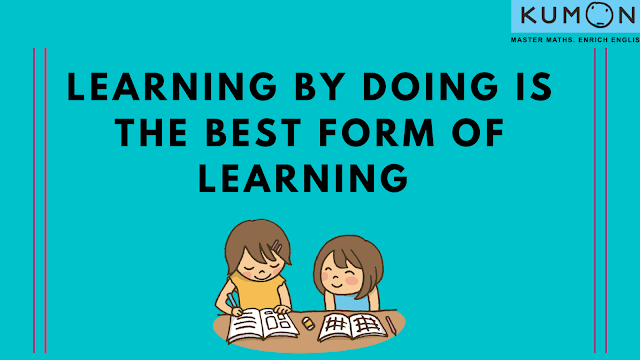LEARN ENGLISH EASILY - LEARNING BY DOING
The American philosopher and educational expert John Dewey expounded a hand down “learning by doing” theory which emphasis on the need of progressive education and the importance of creating a productive environment for kids to adapt and learn. Gathering the pieces from Dewey’s understanding, Simon Frazer university derived a cognitive meaning of experiential learning as “the strategic, active engagement of students in opportunities to learn through doing, and reflection on those activities, which empowers them to apply their theoretical knowledge to practical endeavours in a multitude of settings inside and outside of the classroom”.
Educational experts worldwide have observed that this hand-on-approach has benefitted millions of kids. So, to familiarize you about why learning by doing is the best way of learning English we are listing the strengths of the theory below:
STRENGTHS:
1. Allows kids to Organize and refine ideas: Learning by doing helps the child organize and integrate his/her thoughts and refine the ideal approach before putting forward any piece of content. For example: while constructing an article they would need to first accumulate the basic idea and blueprint before transferring it into sentences. Even in English classes for kids, while writing they will experience the need to lookup up for the meaning of certain words first to cross-check. It enables them to learn better vocabulary and helps in developing a stronger understanding of spellings, and pronunciations. This might take a little longer time initially but once when they are done and look back on what they have constructed the results will appear to be truly fruitful and encouraging.
2. Provides Immediate evaluation of progress: when a child is writing and reciting whatever is being taught to them it helps them identify the mistakes and progress almost immediately. For example: when a child summarizes whatever is taught to them in his own words, he will be understood better how much he learnt and understood. Hence, the technique will allow the students to retrace and independently identify the aspects where they went wrong and correct only those parts.
3. Content cement in mind: practising the words, phrases and rules of language it may be hard to memorize them all but the studies implicate that written practice will help retain information as practice creates new neural pathways in the brain. Practising put a high degree of thought into evaluating and ordering the information that we are receiving.
4. Helps developing an upper hand on speaking skills: Studies on the relationship between writing and reciting reveals that a person who depicts the skills to produce academic language in comprehension eventually develops a better understanding of vocabulary and sentence formation that can easily be transferred into conversational skills. Hence, learning by doing theory enhances a child's both reading and writing skills.
The only complication drawn from Dewey’s theory is that this approach requires a considerable structured teaching and a great deal of detailed planning if the curriculum is to be fully covered. Therefore, if you want your child to experience the importance of Dewey's theory enrol them in a structured after-school program with Kumon. This educational institution follows Learning by doing methodology for implanting reliable English skills in a child with the help of the tried and tested worksheet assignments. Kumon makes sure that every child regardless of their age and learning abilities writes and recite every concept they learn independently and conquer every challenge that comes their way.




Comments
Post a Comment